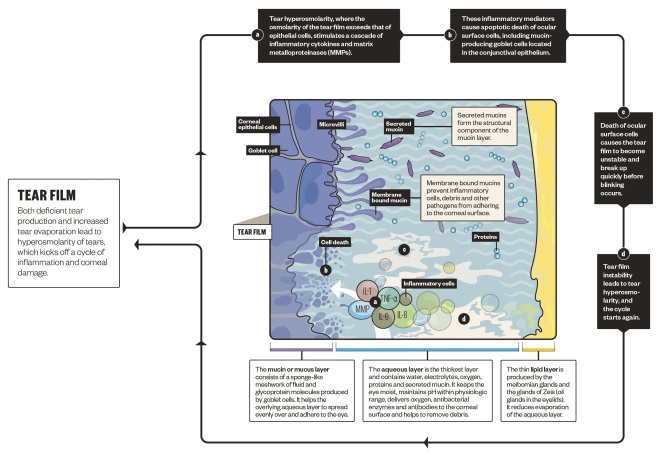Download the full infographic here

Figure 1: Pathology of dry eye disease
There are two main types of dry eye disease: aqueous deficient dry eye caused by a reduction in fluid from the lacrimal glands, and evaporative dry eye, caused by a reduction in oily substance from the meibomian glands

Figure 2: The tear film cycle in dry eye disease
Aqueous deficient dry eye and evaporative dry eye result in instability of the tear film that bathes, nourishes and protects the eye, leading to inflammation and potential damage to the eye surface

Figure 3: Treatment for dry eye disease
A number of different strategies are used to treat dry eye conditions, depending on their cause and whether the symptoms are mild or severe

Figure 4: Referral advice for dry eye
Pharmacists are encouraged to refer patients with dry eye disease to a specialist when there is a reasonable level of uncertainty in the history and symptom-informed differential diagnosis
References
Graphics: Alisdair Macdonald.
Editorial advisers: James Wolffsohn, optometrist and deputy dean of the School of Life and Health Sciences, Aston University, Birmingham; John Dart, ophthalmologist, Moorfields Eye Hospital, London; Shelly Bansal, director, First Contact Opticians, Eastcote, Middlesex. Sources: 2007 Report of the International Dry Eye WorkShop (DEWS); National Institute for Health and Care Excellence; The Pharmaceutical Journal.



